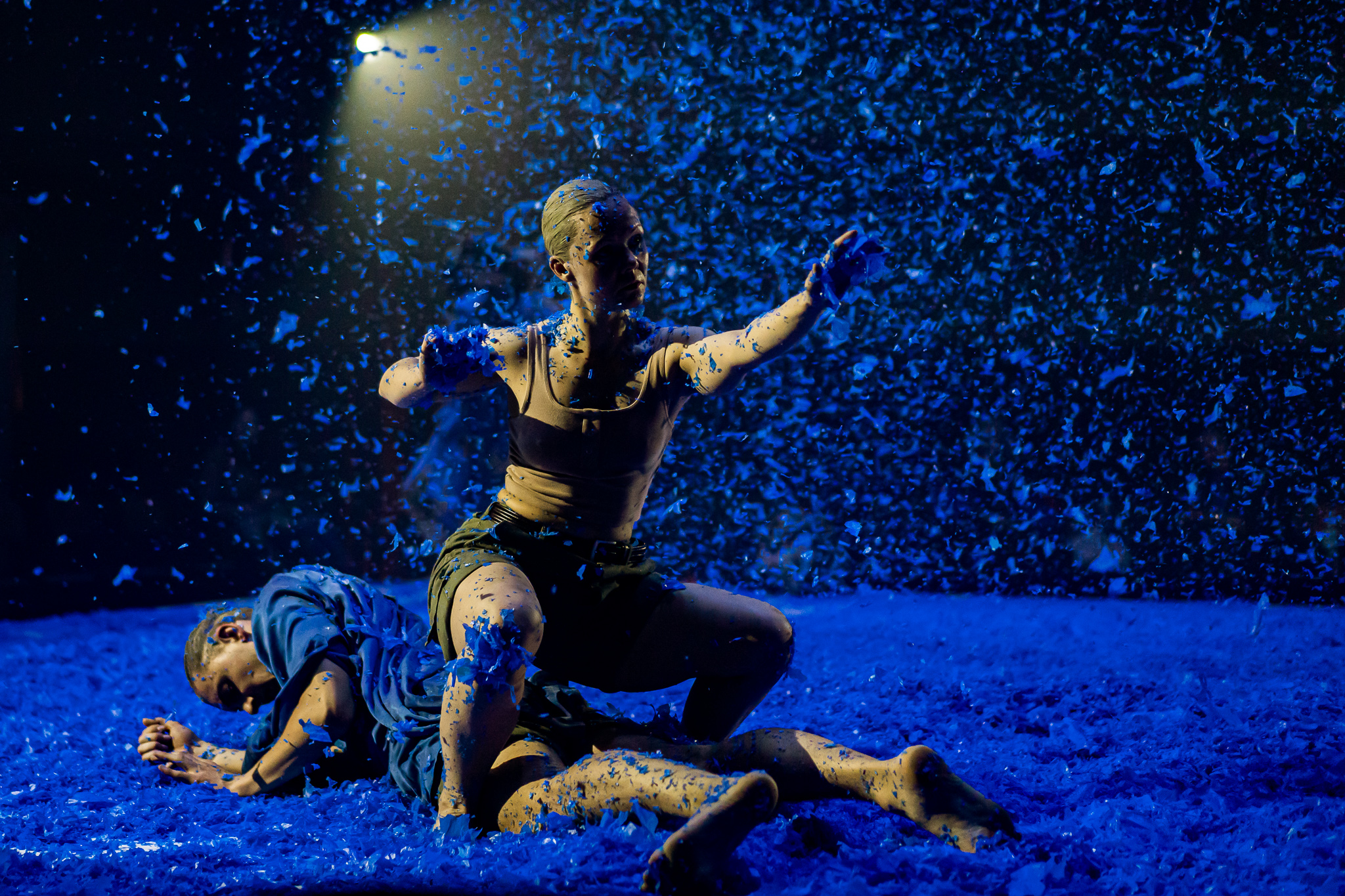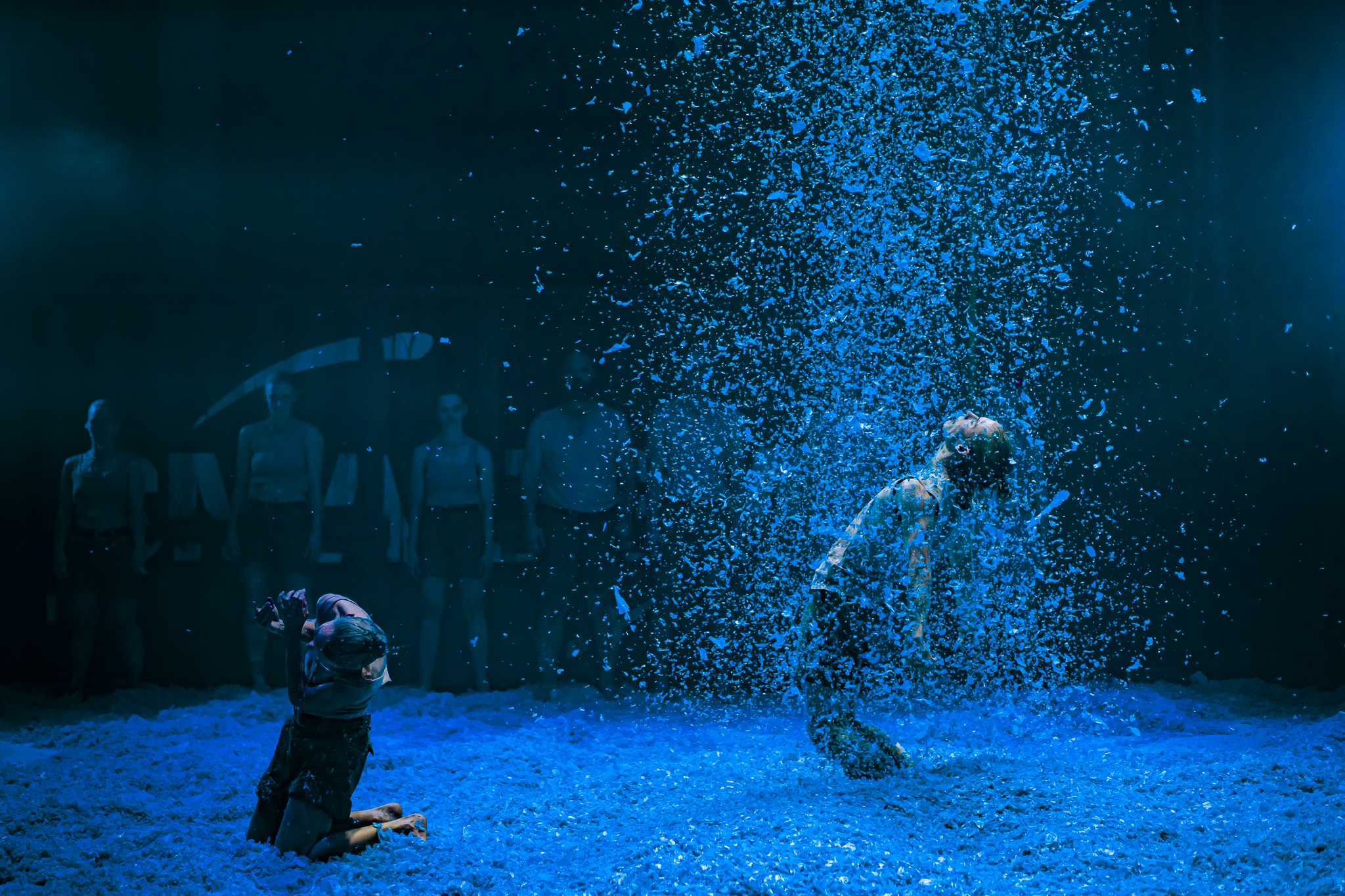Lithuania has seven mummies, but three of them are fakes. In one of the sarcophagi, it turns out, lies a supposed princess, who is actually a man. Although it should be added that over time even fakes have come to be seen as useful historical artefacts that help to better understand the fascinations and demands of their time. By no means was the father of Aegean archaeology, Heinrich Schliemann, a forger or a fraud, but his controversial excavations, his destructive archaeological methods and inexperience were condemned by later archaeologists who questioned Schliemann’s qualifications, his true motives, and his methods. Nevertheless, he is credited with finding the site of Troy – the undeniable lifetime achievement for a so-called “German adventurer and con-man”.
What connects the discoverer of Troy with Klaipėda, the place where the premiere of the dance production “Indigo. Das Schliemann Projekt” by Šeiko Dance Company took place on September 27, 28, in the hangar of the HOFAS courtyard, located in the port area? It appears that during the Great Klaipėda Fire in 1854, only merchant Heinrich Schliemann’s goods were left unscathed in the warehouses of this very port. Selling his goods, mainly indigo powder, he significantly increased his capital, which later helped finance the excavations of Troy. This fluke determined the life path of not only one individual, but also remarkably contributed to the study of the ancient human past.
The dance performance begins with dancers representing unearthed soil. This breathing earth finally opens up and the dancers slowly rise up and make their presence known. As the music influenced by dactylic hexameter rhythm (composed by Donatas Bielkauskas) begins to build and excerpts from Homer’s Iliad are incorporated into the soundscape, figures slowly come alive. At first gently swaying, the dancers create moving sculptures together. Later, the dancers become more and more energetic, until they eventually break their configuration and move throughout the space.
The dancers unwrap themselves from their heavy, fossil-like coats, revealing blue shirts peeking out from under them (costume design by Sandra Straukaitė). Similarly to the way artefacts are unearthed, archaeologists may analyse them individually, but also may sort them into groups to see patterns, so too do the dancers begin to form constellations. According to the choreographer Agnija Šeiko, it was important that there be nine dancers on the stage, as if symbolizing nine cultural layers, nine interpretations of Troy, each representing a different aspect of not necessarily Schliemann himself, but rather a Schliemann-like character – a person who is so committed to proving the myths that he becomes a legend himself.
After “the excavation”, a bearded man appears (dancer Petras Lisauskas), in contrast to the ensemble. And although he is not supposed to be the main character, his strong presence steals the show. He perfectly embodies the gravitas which we assign to the people of the Ancient and then the much more recent Prussian epochs. His fluidity, as he continually skims the stage in his long indigo shirt, gives spectators a sense of wonder. He has the power to show us humanity in search of something greater, to show us the wonder of discovery, and perhaps, finally, to show us unavoidable destruction. His hand movements, reminiscent both of birds and waves, narrate tales related to both Homer’s epics and Schliemann’s own backstory. The ensemble is with him. They respond to his force repeatedly as the impetus for their movements. The bodies of the dancers, now positioned upside-down, form a little human-forest. The toes, by their movement in the air, form the branches, hands and fingers – the roots, and by the succession of actions in the same points, the torsos construct the trunk of the human-plant. Indigo debris now falling from the ceiling amplifies the image; both the debris and the ensemble embody the power of time and its crushing impact on how certain things get hidden and others get put on a pedestal. Two hundred and sixty kilograms of blue ash falling from the ceiling during the performance encapsulate not only Schliemann’s lucky break during the Great Klaipėda Fire, but also the symbolism of fire and ash in “The Iliad”. All the historical events are happening simultaneously, echoing each other like ticking clocks.
A sense of cataclysm and a sense of victory share the stage as the painterly light by lighting designer Andrius Stasiulis evokes mood and defines and sculpts the movement of the dancers. Preferring a small but powerful palette of colours, Andrius controls the appearance of the stream of falling indigo debris making it as dramatically impactful as possible. The lighting design continually flows, as if discerning cross-sections of contrasting eras and separating different parts of the production. A playful yet also aggressive imitation of swings or sails by dancers requires a high degree of mutual trust and engages the relational dynamics among dance, children’s games, history, aesthetics, psychology, and the vital exchanges between sense of self and community. This communicates that most discoveries and other achievements wouldn’t be possible without a group effort, proving how much we all truly need each other.
As the ancestral whispers awaken the ensemble from their short indigo slumber, they can be seen feverishly searching for something in the blue snow which now generously covers the entire stage. Crawling in synchronicity inch by inch, they soon find themselves burdened by the coats on their shoulders handed out by the dancer Inga Kuznecova. While the multilingual counting to nine is happening in the background, large heavy-looking raincoats nestle on the shoulders of the dancers, as if weighing down humanity’s efforts with the trauma of the historical past, sometimes easily dismissed as parcels without return addresses. The figures struggle but persevere; their narrow silhouettes supporting the bundles high in the air suggests a force resisting the planetary burden of gravity. The dancers, reminiscent of Giuseppe Penone’s outdoor installation of rocks stacked on tree branches at Fort Mason, quickly start their burden-sharing, exploring the deep evolutionary interdependence between individual and society. The same sentiment can be seen in the emotional culmination of the performance when the slow procession of the dancers refers to the great migration of the nations and tribes.
“Indigo. Das Schliemann Projekt” emphasizes a dynamic sense of modern person (a hybrid persona composed of trickster and explorer archetypes), and the choreographer’s steadfast belief that human beings play a strong role in manifesting their own destinies. This dance performance shows that people who accomplish something transformative, unexpected, and inspirational don’t necessarily have to be perfect specimens of transparency with never-failing moral compasses. Also, that error can sometimes aid in solving complex equations, the answers to which are not always available in rational ways.
Humanity has been faking “it” since the dawn of time. We always dream that future generations will remember us as much wiser, braver and selfless than we actually were. It would be rash to simply stow away all frauds, fakes and embellished stories, or to deny their presence, just because it seems embarrassing that they were once considered genuine. They are, after all, a demonstration of the human spirit – our drive, our ability to perfectly repeat, imitate, adopt, our capacity for deception, and our curiosity, weaknesses, and obsessions. Whether it’s right or wrong, even a forged biography can become a part of human history for the reason that it depicts, if not authentic, but a glorified making of the hero, inviting us to consider what we idealise in others. This dance performance reminds us that the one who so desperately wanted to exhume the mythical past is now himself buried under a thick patina of time, not without his own efforts to muddy the waters.
It is said that there would be a lot more ancient Egyptian mummies if we didn’t grind most of them up to paint with… But perhaps one’s remains used in the creative process is the metaphorical immortality about which the ancients have dreamt so much.



